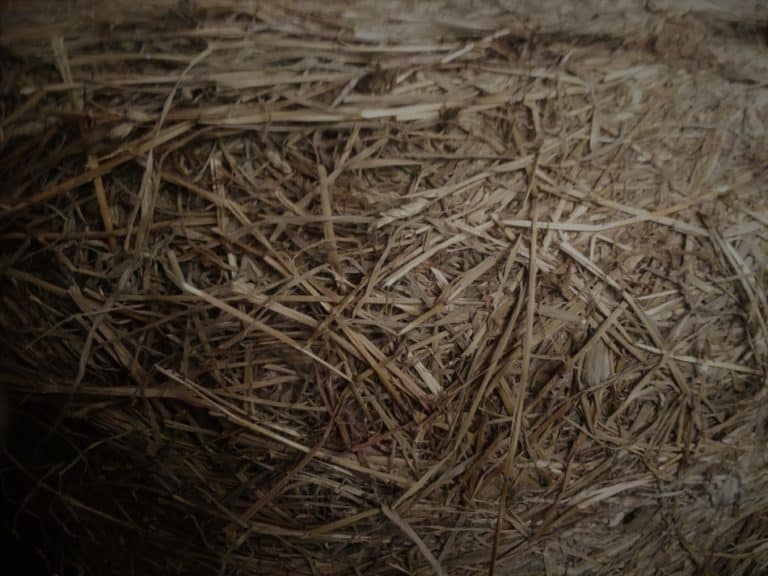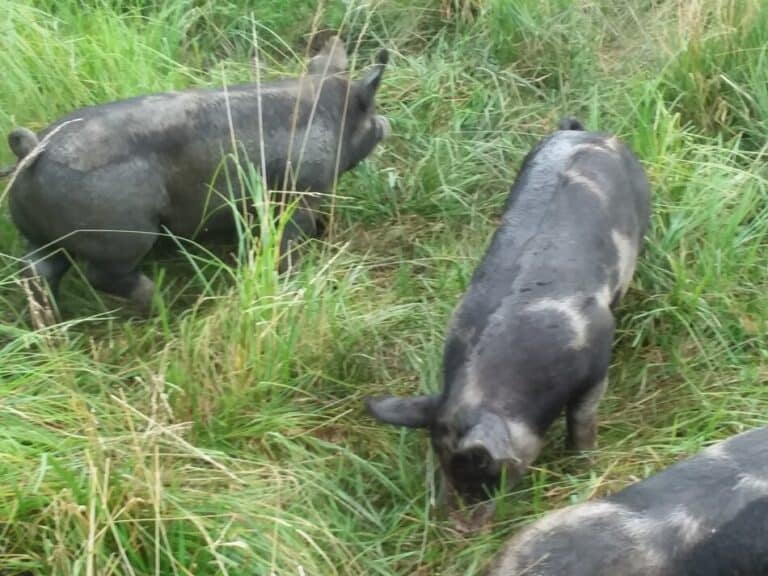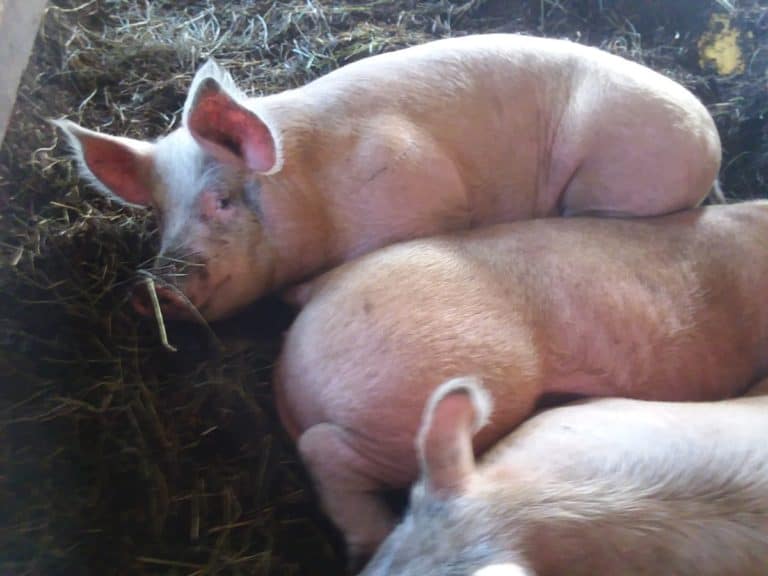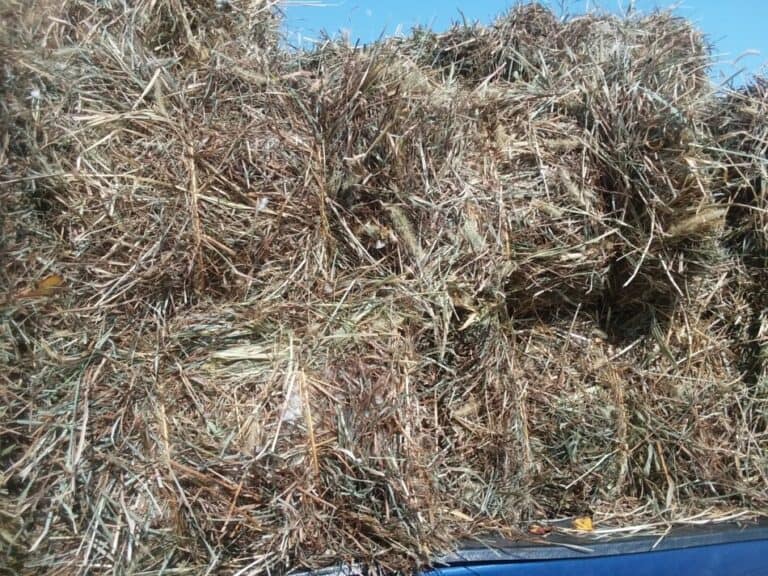Raise Your Own Meat: How Long Does It Take?
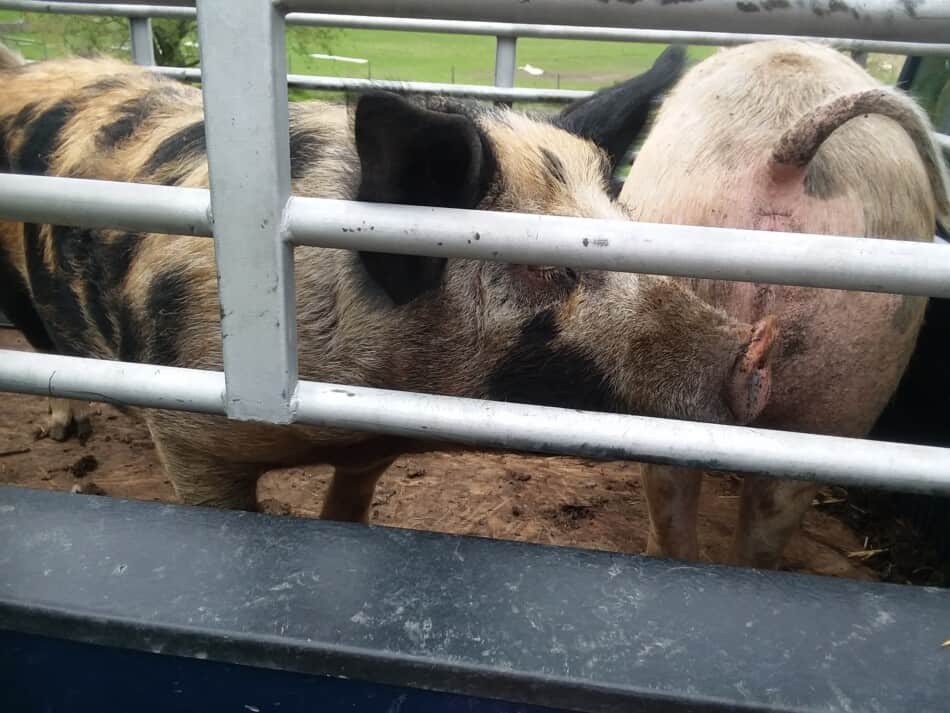
Wanting to start raising your own meat? Now you need to know how long it’s going to take!
You can do quick projects of 2 months or less, all summer projects taking around 4 months and longer than 1 year projects. It really depends upon what you want to raise!
Raising your own meat can take as little as 6 weeks for quail and broilers, around 4 months for feeder lambs and feeder pigs and up to more than two years for grass fed beef.
| Meat Animal | Time To Processing |
| Broiler chickens (white ones) | 46 days |
| Quail | 6 weeks |
| Pekin Ducks | 8 weeks |
| Feeder Lamb | 4 months |
| Feeder Pig | 3.5-4 months |
| Traditional Poultry (for meat) | 6-12 months |
| Red Ranger type broilers | 3-4 months |
| Feeder Beef | 6 months |
| Sheep | 6 months (lambs) |
| Grass Fed Beef | 26-28 months |
| Bottle Calves | 18 months |
| Egg Layers, ducks or chickens | 6 months to laying |
I’m glad you’re here and you’ll be glad, too! Once you experience the satisfaction of growing your own food and the incredible difference in taste, you’ll be more than willing to raise meat animals again!
I’ve divided up the raise your own meat projects into time to finish sections: quick-under 2 months, medium length-4-6 months and longer term- 12+ months.
This way you can decide where you want to start and have an idea of what you are getting into.
Meat For A Year gives you specifics on how much of each animal you would need to raise, with different animal combinations so you can pick the one that suits you the best.
I’ve also included a section on animals you might not want to raise, especially as a beginner.
It’s not that there is anything wrong with the particular animal! It’s usually put in the “didn’t make the list” section because it is challenging to raise or difficult to find a processor.

5 quick to finish meat birds
The first category of easy care and low maintenance animals is a short term meat bird, the longest time commitment on the list is 8 weeks!
If you are thinking to keep the birds, they are not being raised for the freezer, see the last section.
Here are three easy start choices for quick to finish meat birds:
- Broilers
- Quail
- Pekin ducks
Of the choices you kind of have to “pick your poison” or choose the challenge you are most willing to deal with.
Let’s list the good and the bad of each bird so you can decide where to start!
Broilers are fast growing meat chickens
Broilers: Smoking fast growth, 46 days from getting them home to those chickens being ready to butcher!
They are one of the easiest animals to home butcher as well, if you’re thinking about trying it!
The down side of broilers is they are a bit more fragile than ducklings, not much but a little, and you are on a time schedule with these birds.
This is the biggie regarding raising broilers, they must be butchered at 8 weeks, 9 at the latest!
Sadly, when they get older than this the broilers have grown so much their body can’t support itself anymore and you’ll find dead chickens in the pen.
Especially if it is hot out towards the end of the project period. Butcher them on time and no worries, go longer than 8-9 weeks and you’ll start losing some to stress.
Chickens In Your Backyard gives you some ideas on keeping your birds when you have limited space.
Quail are fast, small and quiet
Quail: Quail can really grow, 6 weeks to full size and laying eggs soon after that! The great news about quail is they are quiet!
If your backyard or neighborhood has restrictions on chickens, quail will still be okay!
Be sure to double check before you get quail, but from what I’ve run across, quail are allowed even in places where chickens or other animals are not allowed.
The down side of quail is their size, wow, are they small! That means your pen has to be very well built or the little monsters will get out and be cat bait!
The other concern with quail is that they seem to have zero tolerance for getting wet, like rain blowing in from the side of the pen. Don’t let it happen!
Quail still need plenty of air movement through the pen, just be sure to block stronger winds and definitely the rain!
Small-Scale Backyard Quail is a Mother Earth News article with a nice overview for new quail raisers!
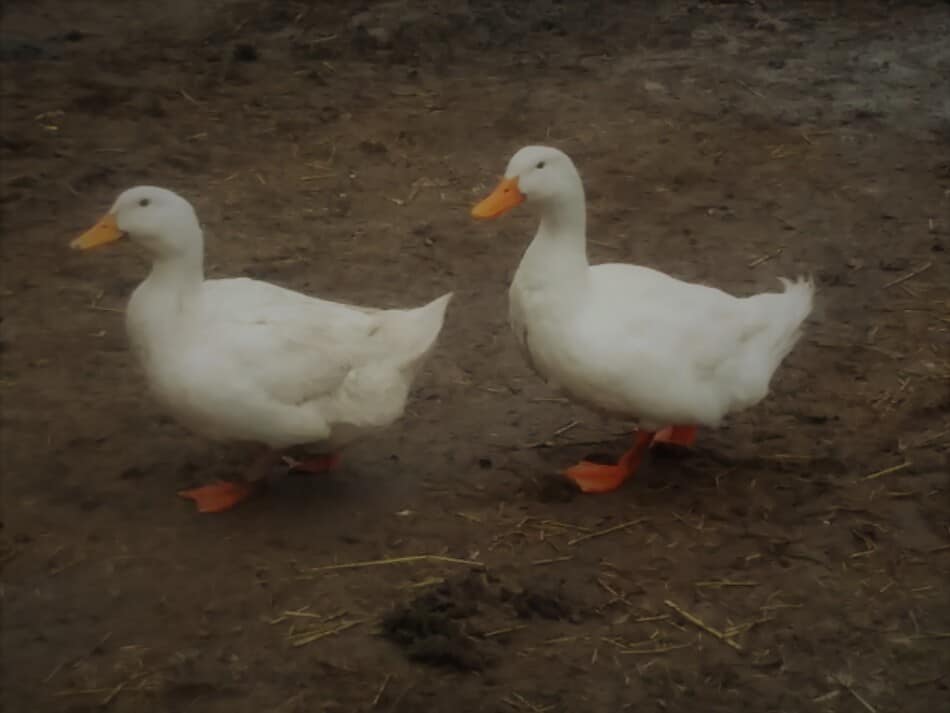
Pekins are the best meat duck
Pekin Ducks: Pekins have a near amazing growth rate, just 8 weeks to get to butchering size.
Of course, if you are looking for something to keep around your yard, that’s great, too!
Either way, at 8 weeks they will be big enough to be left outside all day, still put them in at night though!
I love how easy duckings are to raise! I feel ducklings are more hardy than broilers or quail and have more personality.
The down sides of Pekins and actually any ducks are the mess they make with water (this can be reduced, but not eliminated) and the butchering.
Wow, do they have a lot of feathers, two layers of them! You will be plucking feathers for a while when cleaning ducks!
It’s doable, for sure, we do it all the time! Just plan extra time per bird to get all the feathers.
Cost To Raise Pekin Ducks: From Day Old To 8 Weeks gives you the specifics for your budget.
Animals that didn’t make the short list
Other breeds of ducks: Nothing against other breeds of ducks, they just all grow slower than the Pekin.
If you want a different duck, go for it, just realize it will take longer to get them to full size.
Meat rabbits are backyard friendly
Fryers (Rabbits): We have raised rabbits before and they can be fast to grow to butchering size, about 2-3 months.
The reason they aren’t on the easy list is getting them to the freezer will require you to do the butchering.
Getting rabbits commercially processed is possible, but not common.
Be sure to check your area for processing options before you get rabbits if you won’t do the butchering yourself.
If you are willing to do the butchering yourself (it’s easy), rabbits are a great, quick growing animal to choose for raising your own meat.
Actually, if you are willing to butcher your own rabbits, I would move them to the top of the easy and you keep them year round list!
Cost To Get Started Raising Rabbits gives you a get started then yearly budget for backyard rabbits.
Take all summer projects
This section is animals that will take a bit longer to raise than the meat birds above, yet, still are being kept for meat.
These choices are a bit longer term projects but will still finish up at the end of the summer or around 4-6 months from when you get started with them.
If you are wanting more long term animals, look at the last section.
Easy care multi month project animals are:
- Feeder lambs
- Feeder pigs
- Traditional breeds of poultry (for meat)
- Red Ranger type broilers
- Feeder steers (butchered at smaller size)
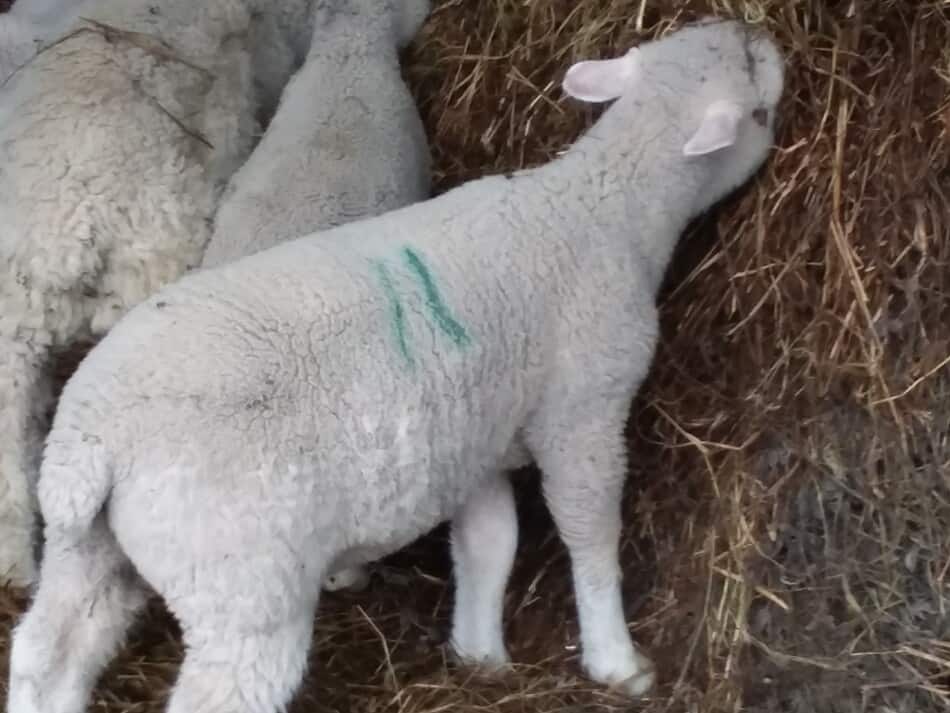
You can raise feeder lambs for the summer
Feeder lambs: Feeder lambs or weaned lambs are lambs that are a few months old and don’t need their mom any more.
Is Raising Your Own Lambs For Meat Worth It? shows you how to work out your budget to see if raising your own lamb makes money sense.
The lamb will be around 50 pounds and about 2 months old when you get it and grow to market size for you in 4-6 months.
Feeder lambs would be a great for someone with extra grass or anyone who is tired of paying for their lawn to be mowed!
How long it takes for them to finish depends upon how big you want the lamb to get before processing and the breed of lambs you are raising.
The downsides of feeder lambs are price (currently) and the need for at least two lambs to be raised together.
Please, do not raise a lamb by itself, they crave the companionship of other sheep. If you want your lamb to grow well, raise him with a buddy.
Regarding price, currently the price of a feeder lamb is around the same as the price of a finished lamb (market or freezer size).
The price is a bit different for feeders and finished lambs, but not much!
If you want to raise your own lambs anyway, then go for it! You’ll know exactly what that lamb ate and how it was treated, giving you custom raised meat for your freezer!
If you are raising lamb to make your meat cost less, you may be better off to buy a finished lamb from someone else.
Feeder pigs take 3.5-4 months to finish (reach butchering weight)
Feeder pigs: Your feeder pigs will reach finishing weight in about 3.5-4 months, if you have them on full feed-meaning all they want to eat.
If you have them out on pasture or in a wooded lot, where they can look for some of their own snacks and keep themselves busy, they will take longer to reach finishing weight.
Best Time To Get Feeder Pigs goes over your plan for raising your pork, most folks are not aware of this, but you can raise pigs, most anytime of the year!
Feeder pigs are easy and take hardly any work at all, as far as daily chores.
Of course, they need to be checked a few times a day and have plenty of food and water but, overall, they are easy.
Especially if you have a bulk feeder that can hold at least a bag of feed and an automatic waterer, you are golden.

The feeder and the waterer don’t need to be fancy, our waterer is a gravity flow cup on the bottom of a 55 gallon barrel, works great!
Of course, you can use pans to feed and water, just be aware the pigs will make it their mission in life to spill both pans!
The downsides of feeder pigs are getting them and containment. Some areas of the country have few, if any, small farm pig raisers for you to buy from.
If you have pigs in your area, check online ads and bulletin boards at the farm store, you are set.
Regarding keeping your pigs in their pen, T-posts and hog panels will work great, be sure to include some sort of shelter for shade!
A garden type welded wire fence will not keep pigs in, they will lift the bottom and go under.
Traditional poultry has more flavor
Traditional Poultry (for meat): This section includes chickens, ducks, geese and turkeys.
Most of these birds will reach butchering size in 6-8 months. Not as fast to finish as the birds in the first group, for sure, but still short term projects that will easily finish over the course of a summer.
A word to the wise regarding waterfowl: the plucking of waterfowl is much more involved than that of chickens!
Plucking is not hard (we do it all the time with just hot water), but it is time consuming and pricey if you are paying for the processing.
As far as pricing goes, around here chickens cost $3.50-4.00 each for processing and ducks cost $9.50 each, to give you an idea.
When making your processing appointment, be sure to ask specifically about ducks or geese. Not all places that do chickens are set up to do ducks and geese.
Choosing A Chicken Hatchery walks you through picking which poultry hatchery you should order from.
Turkeys grow fairly quickly
Turkeys: Even the broad breasted white turkey, the commercial fastest growing turkey, is listed here since it will still take about 4 months to grow.
The other turkey breeds or crosses will take a bit longer, closer to 6 months and will finish at a lighter weight.
The trade off here is taste, wow, are traditional breed turkeys great to eat!
10 Breeds Of Turkeys gives you a walk through of the most popular breeds and why you might like them.
Red Ranger broilers take 12 weeks
Red Ranger type broilers: These broilers take a bit more time to grow than the white Cornish Cross type broilers, more along the lines of 12 weeks.
Red Ranger type birds are more energetic birds, overall. Our white broilers never jump out the top of the cage when I move them to new grass, but the Red Rangers do it all the time!
Cornish Cross vs Red Rangers goes over my experience raising these two types of broilers at the same time.
Red Ranger type broilers have a bit more flavor and will finish at a smaller weight than the white broilers. They also have much more of a lively attitude than the Cornish Cross!
I actually prefer the white broilers for taste and ease of cooking, but my daughter and her husband like the Red Ranger type better.
Feeder steers are shorter term beef projects
Feeder Beef: Depending upon the size you want to butcher your beef at, a steer that you feed all summer then butcher in the fall will take between 6-8 months to grow.
To keep your beef project to just the summer, you’ll need to get good sized yearlings to start with and then get them butchered at the end of the growing/grass season.
These calves will not weigh as much as a full size steer. Depending upon how you feed him, he’ll gain between 2-4 pounds per day.
Figure up your growing season, or length of your project and see how big of a steer you will need to start with to get the finishing weights you are hoping for.
Nothing wrong with a smaller animal, as long as you keep them on a high quality diet so they have some fat covering when processed.
Fat equals flavor! You want the flavor, so be sure you have the fat!
Is Raising Your Own Beef Worth It? goes over the costs of raising your own versus buying from a neighbor or local small farmer.
Longer term Feeder Steer: More commonly, people around here that raise feeder steers will have them for about a year.
This means that the steers will be kept through the winter in order to get to a bigger butchering weight.
People around here that like a larger animal to butcher, generally keep steers most of the year.
When they send the current steers to the butcher, they get in another group that will be ready to process in about a year.
If this is your plan, realize it will take more work from you, since you’ll need to provide winter hay, but the trade off is a bigger carcass for the freezer.
The real difference here is rate of gain. Here is an article, for commercial cattle raisers, on rate of gain in beef cattle.
Animals that didn’t make the summer list
Feeder goats are fun, but tough to keep in
Feeder goat: Feeder goats or weaned kids are an option for a summer project. They are fun, but not easy to keep in!
Goats can be raised well in areas that are twiggy or full of briars, they love that stuff! But make sure your fence is tight!
Goats are smart, if there is a weak point in your containment plan, they will find it!
I have to admit, if you are in a hot or dry area, feeder goats would be a better option for you than feeder lambs. As long as you have browse type forages and a great fence!
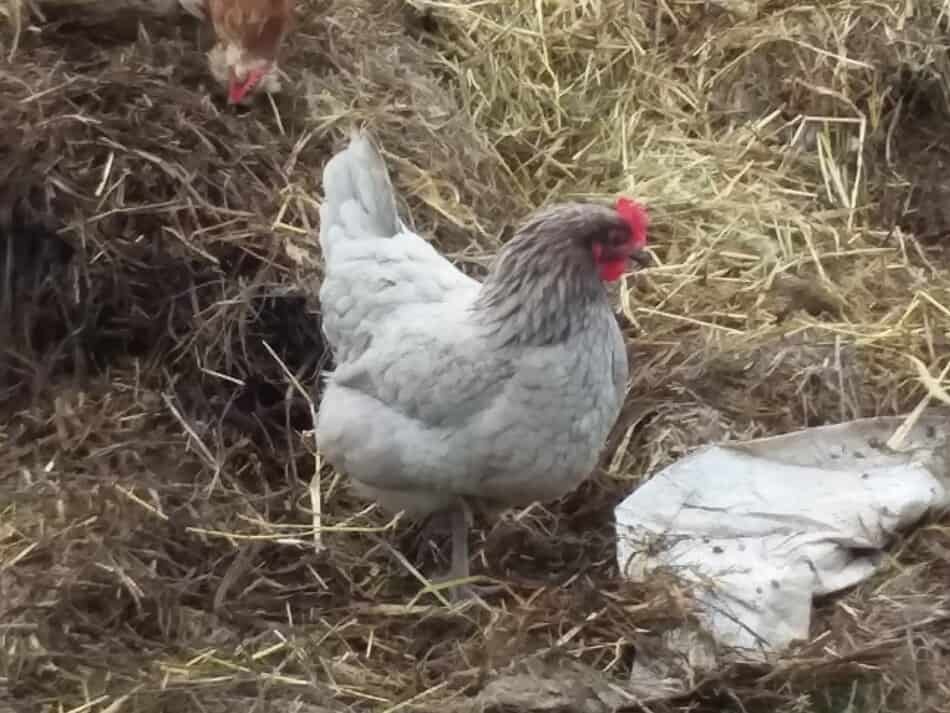
Animals you keep for multiple years
- Sheep
- Grass fed beef
- Bottle calves (if you want them to be full size when butchered)
- Egg Layers
Sheep are great grass converters
Sheep: Sheep will have 1-2 lambs every year, the lambs will be ready to process at 6 months or so of age.
If you start at breeding, 5 months gestation plus 6 months of the lambs growing is 11 months.
Pros And Cons Of Raising Sheep gives you the good and the not so good of raising sheep.
While most people plan on sheep lambing in the spring, some breeds can have lambs year round, like Dorset and Polypay, which would spread out your meat supply.
A flock of sheep is pretty low maintenance, even wool sheep. If you’re worried about the wool, get hair sheep instead.
We have wool breed sheep and most days they just need checked over.
Best Breeds Of Sheep For Meat gives you a specific list of the top meat production breeds.
If you have extra pasture or want something to graze your yard, sheep are the ticket!
Give them some salt, plenty of water and a bit of shade and they’ll do your lawn mowing for you!
The downsides of sheep are a natural flightiness and parasites. Sheep will usually not want to be petted unless you have a great snack for them.
Bottle babies are the exception, but you should not be keeping bottle raised lambs as breeding stock!
Don’t Keep Bottle Lambs goes over the reasons why you should not keep back bottle lambs into your flock.
A goat will come over just to say “Hi” a sheep will most likely keep her distance until you prove you’ve got something she wants.
The other downside is parasites, they can come on hard and fast in sheep. You must have a parasite plan in the works, no exceptions.
Goats are the same regarding parasites.
The good news here is simply keeping the sheep on good grass by rotating them through pastures will help tremendously with parasite loads.
Grass fed beef takes 2.5+ years to finish, but is doable and tasty
Grass fed beef: I am hugely in favor of 100% grass fed and finished beef and if you have the land, please consider forage only for your steer. He and you will be healthier for it!
Grass fed beef will take around 2 years to raise to finished condition (fat cover). If the calf is born on your place, tack on another 9 months, so nearly 3 years.
Depending upon your resources and how you want to handle your steer’s diet, your beef can be grain or grass finished.
Grazing Cattle is an article I wrote to give you the basics to get started rotating your cattle around the farm to get more forage growth and keep your cattle happy.
As mentioned above, grass fed is super for you and your wallet, but I realize not everyone has the land needed to make this happen.
I mention grain, since I’d rather have you considering raising a steer with a bit of grain than not raise one at all!
Exclusively grass fed beef is a longer term project than grain fed beef, since grass only has lower gains per day.
If you are thinking of getting your steer to finish faster, keep him on great quality grass and hay or give him a bit of grain to up his daily calorie intake.
The grain is not needed, your steer will be fine with only forages. The only thing supplemental grain will do is make the growth faster, not better or more economical.
Bottle calves are available in dairy cattle regions
Bottle calves: These calves can be processed whenever it works for you.
They are the same as the steers listed above, bigger bodies (more meat for the freezer) take longer to put on weight.
Bottle babies would also include the calves raised for veal.
Bottle calves are an economical way to get started with raising your own beef. I have even seen people selling weaned calves, so they did the bottle work, you raise the calf from there on up.
Bottle calves will take some time, even if you buy them weaned. However, they will be more friendly and easy to manage than beef breed feeders and less money to purchase, as well.
In case you are worried about dairy breed genetics for beef, don’t be. It’s all in how the steer is fed and raised.
Raise Dairy Beef shows you how to find and raise a few dairy steers. Not all areas have dairy steers available, but if you do, they are a calmer calf to work with.
We eat dairy breed cattle as our normal beef and they turn out great. You won’t get as big of a carcass as a beef calf, but it will have great flavor.
Dairy X Beef Animals Are Changing The Calf Raising Landscape is an interesting article going over the benefits of dairy cross calves.
Egg layers (chickens, ducks, quail) are great start to raising own meat
Egg Layers: Most birds start laying eggs at 6 months old, with spring being the best time for egg production, no matter the bird.
Most people would be thinking chickens here, and nothing wrong with that, but don’t forget about ducks, as well.
We have both egg laying chickens and ducks, and both have their advantages.
Chickens are more common yet harder to fence in, or out, if you are a gardener! Chickens also tend to lay through out the day, so you’ll need to check for eggs multiple times.
Ducks are easier to fence and will lay their eggs first thing in the morning! Nice for easy egg collection! The down side is they tend to bury the eggs under the bedding, so you might have to look around a bit!
I know some people are keeping quail for eggs, but I don’t have any experience with this. We have raised quail, but not as a source of eggs.
Other birds like geese and turkeys will lay as well, but usually these eggs are incubated, since the moms will stop laying, not continue like a chicken or a duck.
Additionally, once hatched, the babies are a higher value animal to raise or sell.
You could use geese or turkeys as a source of eating eggs, most people choose to keep another, more reliable/longer season egg layer instead.
Animals that didn’t make the longer term list
Goats: Goats are fun, I have some, but they aren’t easy. Why? They are smart and always looking for something to do, usually involving getting out of their pen or pasture.
A caution: there is a myth that goats can live on nearly nothing, not true!
Goats need high quality feed sources, they are more like deer in their eating habits than sheep or cattle.
I know many people who love their goats and wouldn’t dream of parting with them! If you are called to goats, get some!
Just realize with the personality and character also comes the goat ability!
Rabbits: Rabbits are a great choice for raising your own meat, but you’ll need to butcher them yourself, as I mentioned above, so I didn’t include them on the list.
If you are willing to do your own butchering, rabbit is an easy to cook, versatile meat animal to have for your family!
Give rabbits a second look, especially if you are limited in space.
A wonderful source of waterfowl information is Metzer Farms. The are a well known hatchery and have a ton of great articles, be sure to click around the site.
